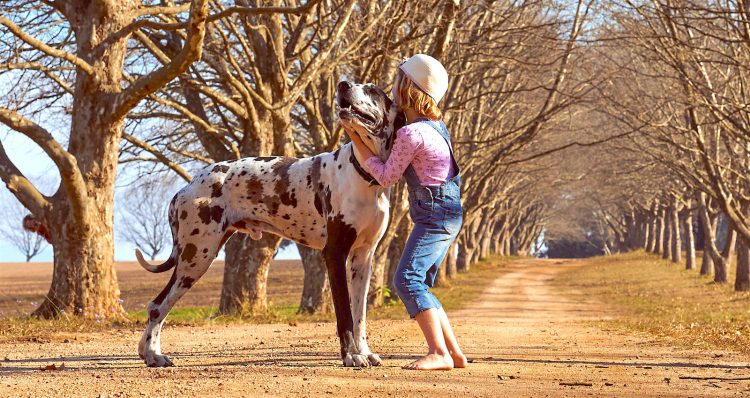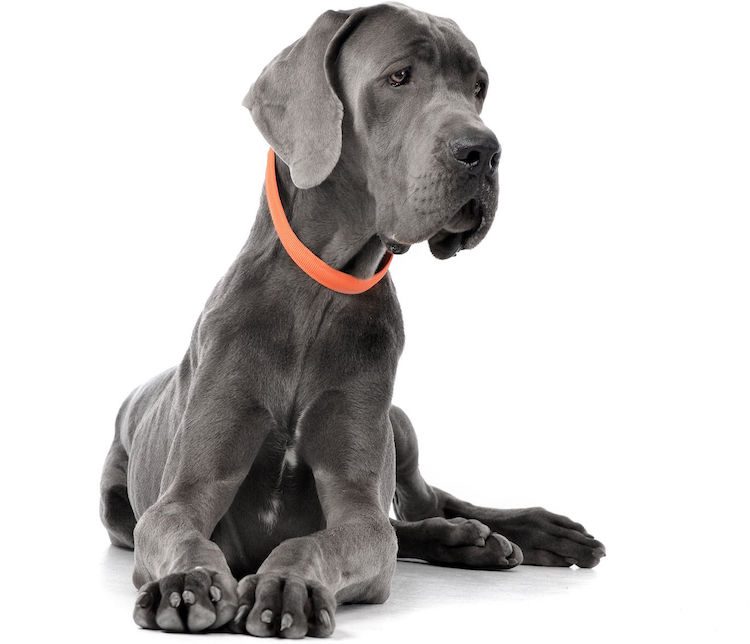
Working
140–175 lbs. (males)
110–140 lbs. (females)
28–32 in.
8–10 years
1. Key Characteristics of Great Danes
Great Danes are among the world’s tallest breeds.
Their short, thick coats can be brindle, fawn, blue, black, harlequin (irregular black or merle patches) or mantle.
2. Where Great Danes Came From
Although some claim that Great Danes were drawn in Egyptian times as far back as 3000 B.C., written descriptions surfaced in Chinese writings around 1121 B.C.
The breed we’re familiar with today were hunting dogs used by the Germans to eradicate boar.
They were developed in Europe in the 1800s and in 1876 were declared the national breed of Germany.
Once their hunting purpose was no longer needed, Great Danes became companion pets.

3. How Friendly Are Great Danes?
Great Danes can be intimidating, with their large, confident stature, but this giant breed is gentle and affectionate, generally getting along with other animals and people.
They don’t have a high desire for chasing prey and are protective of their families, but they don’t intentionally try to cause harm — they really are the gentle giants they are proclaimed to be.
In fact, almost 80% of Great Danes given the American Temperament Test have passed.
Dr. Ross D. Clark, DVM, author of a book on the breed, says “stable, sweet temperament with proper training” is the goal.
4. Is This the Right Dog for You?
Exercise Needs
MEDIUM: Great Danes grow quickly and for longer periods of time than other breeds.
This puts them at risk for problems with joints and bones. Because of this, you’ll want to limit the amount of exercise given to puppies during their growth.
Great Danes need regular walks to keep them on the path to a healthy lifestyle, but too much running can cause potentially fatal bloating. Consistent and equivalent daily exercise is best.
Grooming Needs
MEDIUM: Ear cropping used to be done to protect the Great Dane’s ears from the boar they hunted. Today, some people still crop the ears for cosmetic purposes, but the practice is banned in several countries.
Regular bathing is not required. In fact, excessive bathing could strip the coat of essential oils.
Shedding is comparable to other shorthaired breeds, and daily brushing will minimize it.
Health Problems
MEDIUM: According to the Great Dane Club of America, the most common health problems associated with this breed are:
- Bloat
- Cancer
- Heart problems
- Various joint issues
Feeding the dogs at an elevated height and minimizing activity around feeding times can reduce the possibility of bloat.
Spaying or neutering is usually recommended to reduce the risk of prostate cancer in males and false pregnancies and uterine infections in females.
This video explains much more about what you can expect from a Great Dane:

5. Where to Adopt a Great Dane
If you’re looking to adopt a Great Dane, you’re in luck — lots of these dogs are available for adoption right now around the country.
If you decide to go with a breeder, be sure to ask for health clearances from both of the puppy’s parents. And, as always, watch out for puppy mill red flags.








